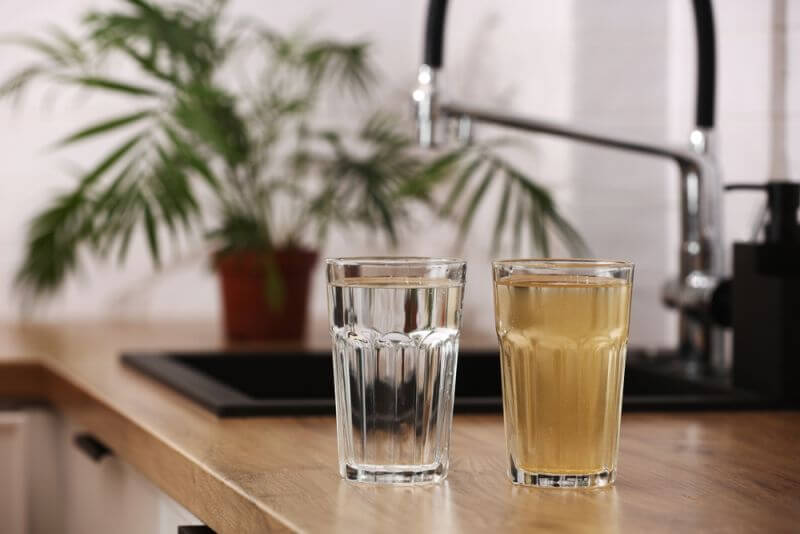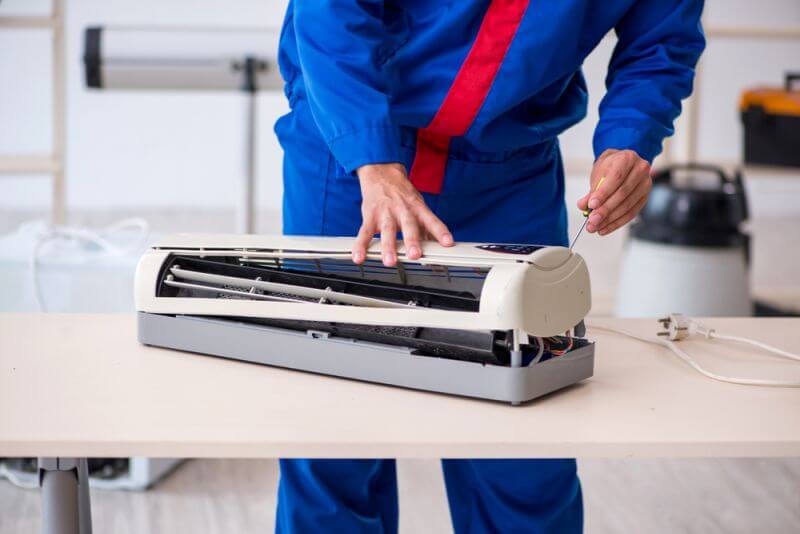As we all know, water is a major consideration for survival; being our number two need. We all put a considerable amount of effort into stockpiling water, building rainwater capture systems, and ensuring that we have adequate means to purify the water that we harvest. Even so, there’s always the question lingering in the back of our minds, whether we are doing enough or not. That question won’t be answered until we are actually in a disaster, trying to survive.
That’s a test with a rather high price tag, should we fall short. We just can’t afford to sit on our laurels, hoping that what we’ve already done is going to be enough. This is why preppers never feel like they are fully prepared. There’s always something else to do.
This Device Easily Turns Air Into Water!
Where I live, water is a major concern, as it is rather arid here. We get some great rainfall, but it only happens during a few months of the year. The rest of the time, we can go two or three months without seeing a drop. That means that rainwater capture only has limited utility, as we can’t capture and store enough water to get through from one rainy season to another.
There’s also very limited surface water. I live just a few miles from a lake; actually, a reservoir. But considering that the water level in that lake has been below 40% for the last couple of years, it would be extremely difficult to harvest water for use. As far as I’m concerned, that’s not a reliable part of my survival plan.
The other option which exists here is subsurface water. We’re close enough to the Gulf of Mexico, that the water table is pretty high. It would be possible to reach water by digging an old-fashioned hand dug water well. The only problem is, the water wouldn’t really be all that useful, as the subsurface water in this area is all brackish, with a high salt concentration.
If you think about it, there’s actually plenty of water in the world. It’s just that only three percent of that water is fresh water. The rest is saltwater. Considering that we can’t drink saltwater and it can’t be used for watering plants, there’s not really a whole lot we can use that water for… or is there?
Getting Salt Out of Water
Saltwater is challenging to work with. We can’t drink it, because the salinity level is higher than that of our bodies. Should someone try to drink saltwater, the salt in the water, which would become salt in their bloodstream, would draw water out of the body’s cells, obeying the laws of osmosis, dehydrating the body through that process.
Somehow, we have to get the salt out of the water. Our typical water purification methods don’t help at all with that. They are intended to kill or remove microscopic pathogens (bacteria and protozoa), not minerals and salt. The closest they can come to removing salt is removing sand, silt and other solids. But those aren’t dissolved like salt is. While our filters can catch that sand, they won’t catch the salt.
There are two known methods of removing salt from water; distillation and reverse osmosis. Distillation is the ultimate in water purification, removing absolutely everything from the water. Unfortunately, it is also slow; making it somewhat impractical for purifying large quantities of water. That leaves us with reverse osmosis (RO), which has been avoided by the prepping movement, due to the relatively high-pressure pumps required to make reverse osmosis work.
For those who aren’t familiar with reverse osmosis, it can be considered to be a water filtration system. But it is different than other filtration systems, in that instead of a filter medium, it uses a semi-permeable membrane. Water, under pressure, is passed over one side of the membrane and a portion of that water migrates through the membrane. The pressure is needed not only because of the miniscule size of the openings in the membrane, but also because the laws of osmosis would require water to pass from the side without any contaminants, to the side with the impure water, defeating the purpose.
As a by-product of this process, there is also waste water from the “dirty” side of the membrane. This brine will have a higher concentration of salt than the water being purified. Depending on the RO system being used, somewhere between 1/3 and 2/3 of the water is ejected as this brine.
The Practicality of Reverse Osmosis
It would seem that reverse osmosis is too inefficient to be practical for a survival scenario, where water is scarce. But that all depends on how much unusable water you have available to you. Someone living on the seashore, has an unlimited supply of water to work with. Extracting purified water from that sea of saltwater, even at the cost of wasting 2/3 of the water being used, won’t affect the amount of water left in the ocean in any measurable way. Nor will the small amount of brine being expelled increase the overall salinity of the ocean’s water, except in a very localized manner and for a very limited amount of time. That extra salt will dissipate quickly, as if it had never been there.
There is another option for at least some of that waste brine. That is to create a catch basin of some sort and allow the brine to flow into it. Left in the sun, the water will evaporate, leaving the salt behind. Considering that salt is another necessity for survival, harvesting salt, while we are harvesting water, is a good idea.
So, how do We Make it Work?
In order to create our survival reverse osmosis water treatment system, we really only need two major components, besides the source of brackish water or saltwater. Those are the reverse osmosis unit itself and some sort of manual pump. The pump must be capable of creating a minimum of 40 PSI of water pressure, as that is what’s required for RO to work. It also needs to be able to pump at least as much water as the RO unit can process; otherwise, the water pressure will probably drop. A pressure gauge, located in the piping between the pump and the RO unit would be useful to ensure that the water pressure remains high enough, without getting too high for the pump to handle.
Home reverse osmosis water purification systems range in price from a little over $100, up to well over $1,000; but there are plenty of low-cost units to choose from. Most will be multi-stage units, with at least one stage of standard filtration, plus an activated carbon canister, before the RO operation. This helps extend the life of the RO membrane, by filtering out dissolved solids that could plug it up. The carbon not only helps remove microscopic pathogens, but some chemicals as well.
Ideally, you’ll want to hook everything together, in a convenient way for use. That means prioritizing setting up the pump in a way that you can use it comfortably and have good leverage. Manually pumping water for an hour at a time can be a very tiring task, so you want to make the best of it. Depending on where you are going to do your RO water treatment, you may need to make it portable or permanently mount it somewhere around your home.
Put some thought into wastewater disposal as well. If you’re getting your water from a hand-dug well, you don’t want to be putting the brine back into that well. Rather, you’re probably going to have to let it spill out on the ground somewhere. Make sure that your somewhere is safe in the sense that it isn’t going to be putting that brine right into your garden, killing your vegetables with too much salt.
Keep in mind also that you’ll need refills for all these levels of filtration, which all have different life expectancies. Do the necessary research to find out just how long each element lasts, then build a stockpile of the necessary replacements, so that you’ll have them for long-term survival situations.
How Long Will it Last?
Of all the parts of your RO water treatment system, the RO membrane is probably the most durable. For home systems, they typically rate these at 2 to 5 years. That’s with the system connected to the kitchen sink and treating all water that’s used in that sink. In other words, it’s also treating the water used to wash your dishes, which really isn’t necessary.
At the other end of the spectrum, the sediment filters will probably clog up the quickest, needing replacement. So, be sure to have plenty of them. The activated carbon will depend a lot on the specific manufacturer.
As long as you have plenty of replacement elements, and parts like fittings, you can expect your RO purification system to last a number of years. Even so, this may not be the final solution to get you through to the end of your life, in a true TEOTWAWKI scenario. With enough time, any consumable stores, like those filters, will run out. Then you’ll have to move on to something else; but at least you’ll have time to put something else together.











































































